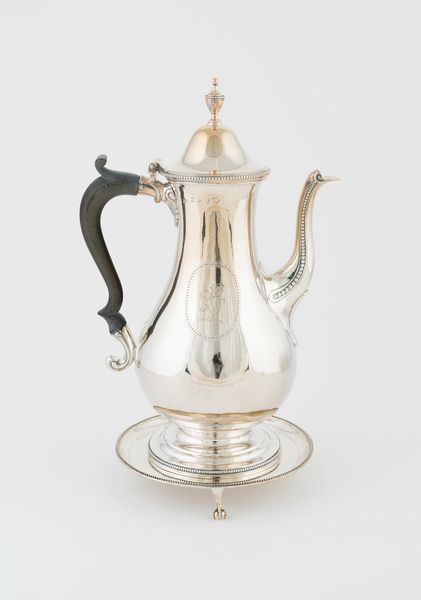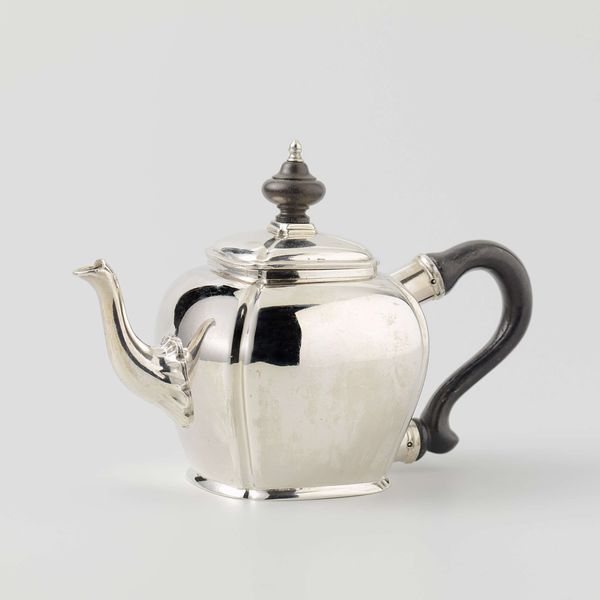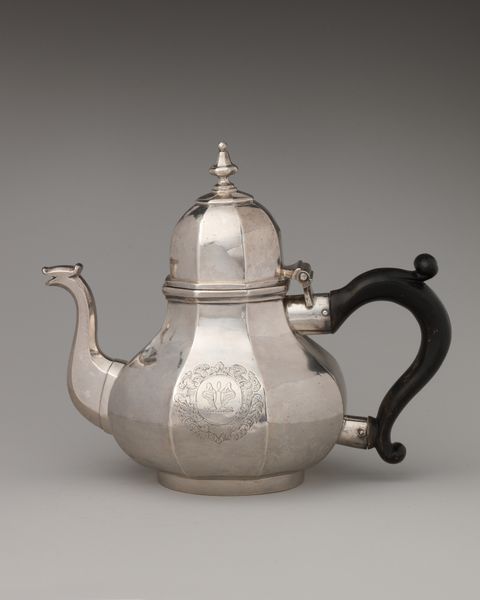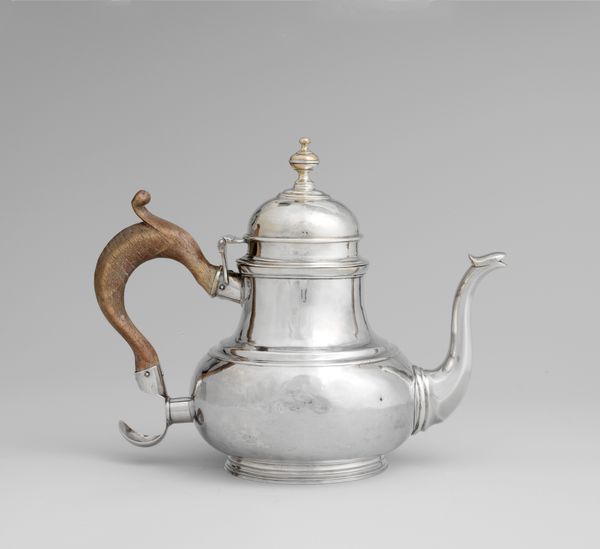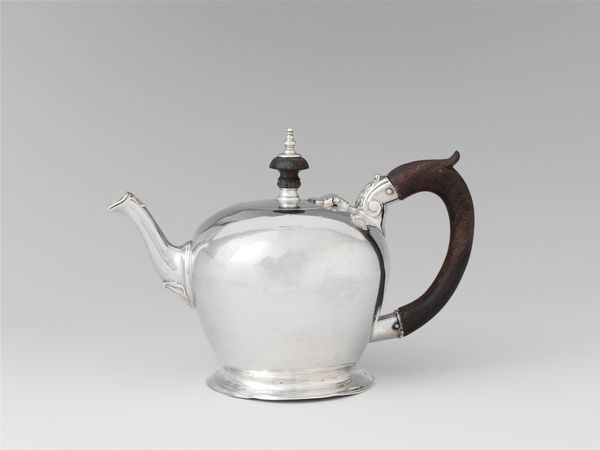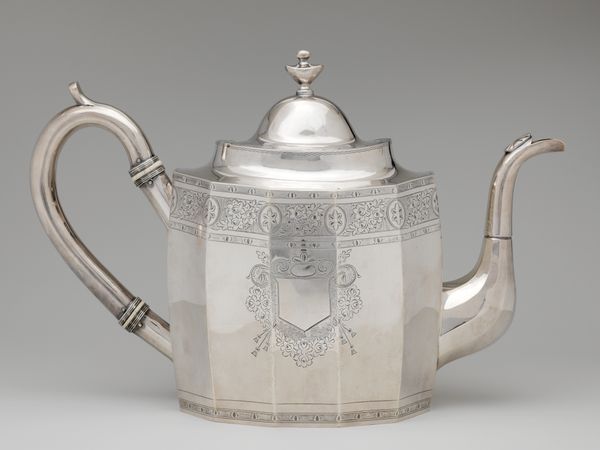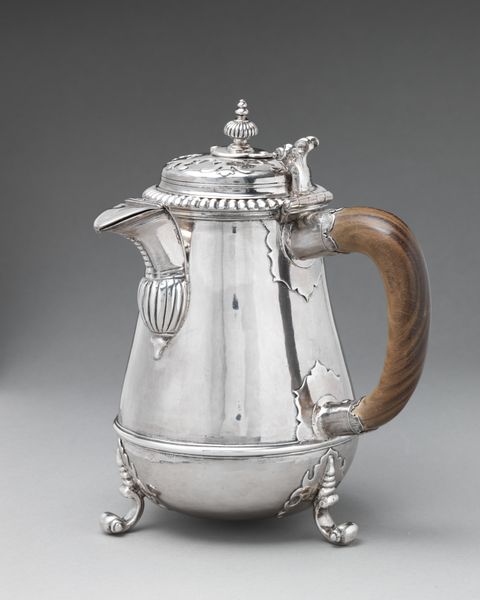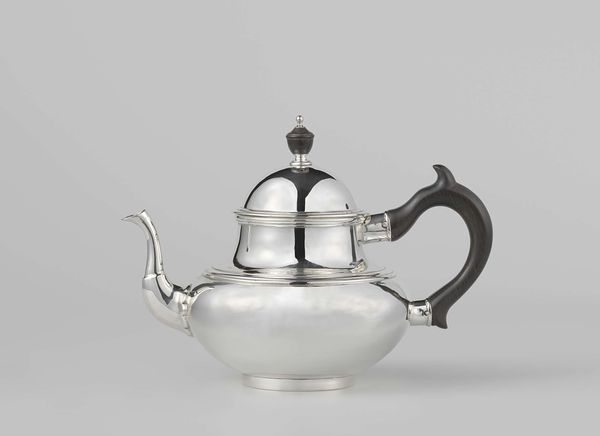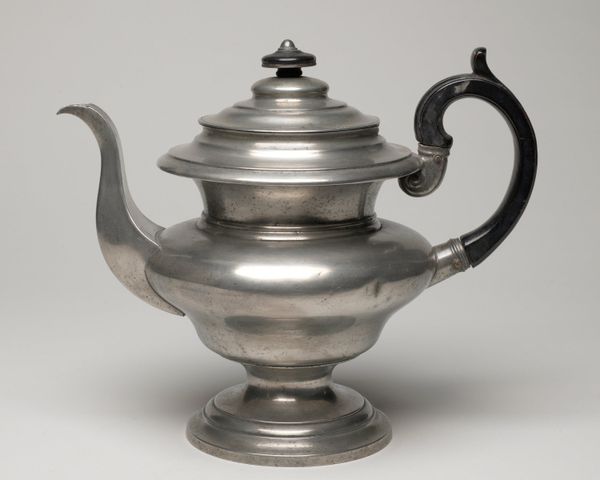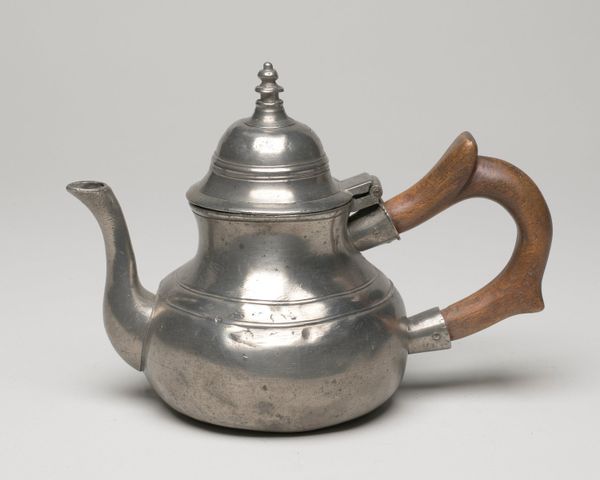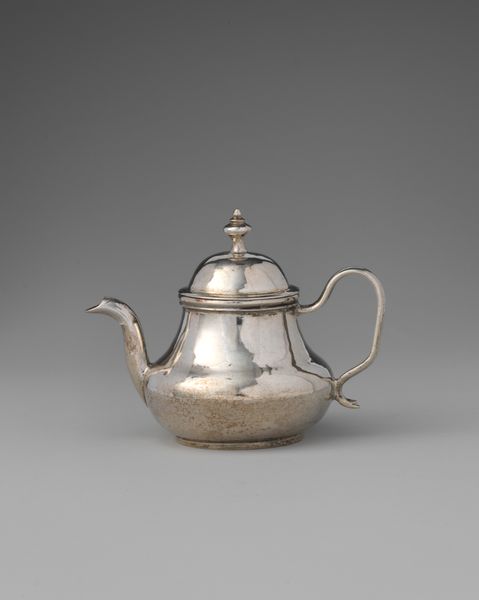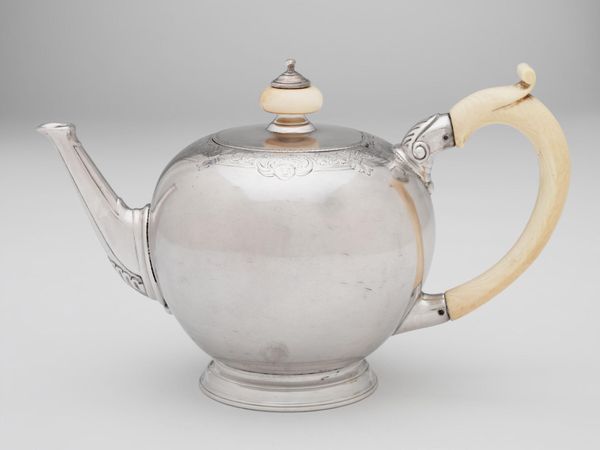
silver, metal
#
silver
#
baroque
#
metal
#
ceramic
Dimensions: 6.6 × 11.7 × 18.5 cm (2 5/8 × 4 5/8 × 7 1/4 in.)
Copyright: Public Domain
Editor: We’re looking at a silver teapot, crafted around 1713 by Joseph Ward. It’s currently held at the Art Institute of Chicago. It feels surprisingly modern to me, in a way. How do you interpret this work in its historical context? Curator: Well, the reflective quality immediately makes me think about display and status. Silver like this was less about the tea itself and more about conspicuous consumption, particularly during the Baroque era when royal courts set trends. Ward’s clients weren’t just buying teapots; they were purchasing social capital and projecting their affluence. Who do you think might have owned something like this? Editor: Probably someone connected to court, given its extravagance. Was tea drinking always such a status symbol? Curator: Not initially. Tea gained popularity in Europe through trade with Asia. Over time, accessories like this teapot transformed tea consumption into a highly ritualized activity. Displaying such a teapot signaled adherence to elite social codes and a cosmopolitan awareness. Note the octagonal facets. Does that reflect anything to you about the social setting of this time? Editor: Maybe a reference to classicism, something solid and stable during what must have been unstable times socially. The rigid shape of the teapot contrasting the precious nature of its material. Curator: Precisely! The juxtaposition between precious material and form highlights a striving for order amid rapidly shifting social dynamics. Also the development of these objects meant silver mining and trading grew considerably; these precious resources went into not just money but decorative display items, shifting what "value" even meant. Editor: I hadn't considered all the trade connections before. Seeing it as part of that bigger economic and social picture makes it much more compelling. Curator: Exactly. Hopefully, we can start seeing beyond its surface and consider what it truly communicates about power, identity, and taste in early 18th century England.
Comments
No comments
Be the first to comment and join the conversation on the ultimate creative platform.
